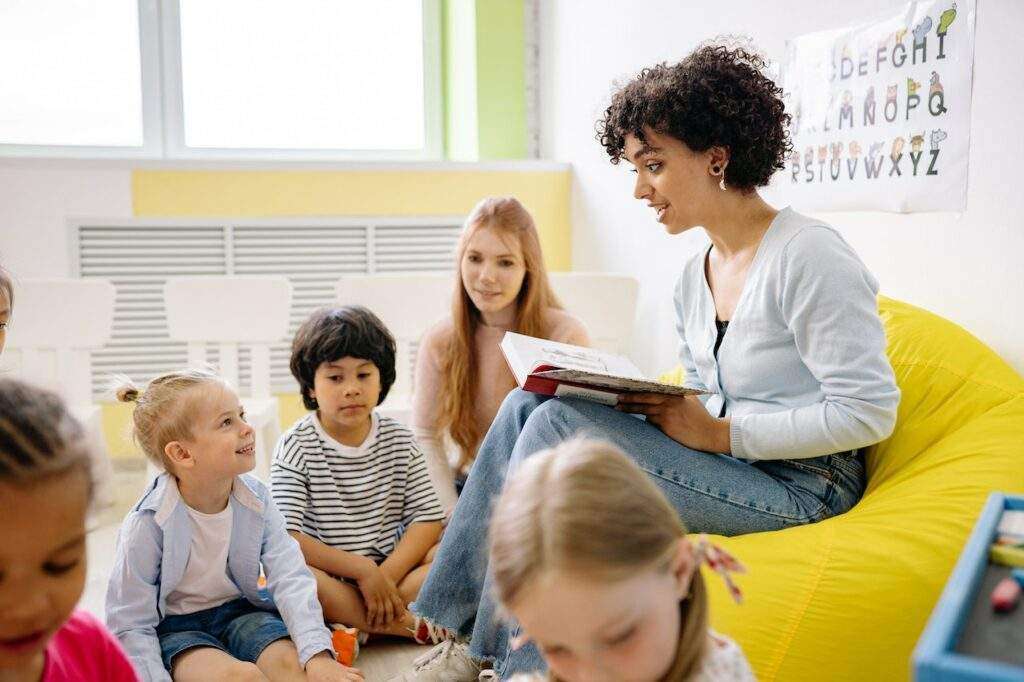
Many reasons exist why learning a second language at an early age is advantageous. Apart from being a pleasurable experience, it promotes healthy development and offers a variety of cognitive and social benefits that can be useful throughout an individual’s lifetime.
Below, we’ll list some of the ways your child can benefit from learning a language early and how parents can assist them in the process, regardless of whether or not they know another language.
Advantages of Learning a Second Language
Young children who learn a second language before age five utilize the same region of their brain for language learning as they do for their primary language. They’re not hindered by the fear of making errors, which can often be an obstacle for older learners.
Let’s analyze some of the benefits of second-language learning at an early age.
Baby Brains Have Unique Skills for Second Language Learning
Babies can distinguish between all sounds in every language before the age of 10-12. Afterward, they begin to perceive only the sounds that are relevant to the languages they’re exposed to for creating meaning. For instance, the Japanese language lacks distinction between ‘I’ and ‘r’ sounds, but babies in Japan can recognize the difference before the age of 10 months. But they lose the ability after reaching the age of 12 months.
For this reason, it’s highly recommended to help your kids in learning a second language when they are still young since they can more easily assimilate new information and convert it into knowledge.
Cognitive Advantage – Brain Boost
Studies examining the impacts of bilingualism on children have indicated that being exposed to multiple languages is a valuable means of exercising and strengthening the brain. According to one study published in Nature, bilingual children displayed a notably greater density of ‘gray matter’ in their brains, particularly those who had been exposed to a second language from a young age. Gray matter is important in processing information, encompassing areas such as speech, memory, and sensory perception.
Native-like Accent
Children naturally incline to imitate the sounds they hear, as they possess a remarkable sensitivity to subtle variations in tone and pronunciation. Their sensitive ears enable them to replicate complex sounds that may be challenging for adults or even older children. By beginning language instructions at an early age, your children can gain a seamless and self-assured speaking style.
Constant Mental Exercise
Individuals fluent in more than one language persistently engage in a mental exercise. Because they navigate multiple linguistic systems to communicate. In the 20th century, scholars and teachers discouraged learning a second language, presuming that it would interfere with children’s intellectual and cognitive growth. Although research has indicated that bilingual children may indeed encounter some interference between language systems, it has also revealed that the internal conflict experienced by bilingual individuals helps cultivate exceptional problem-solving skills.
Advanced Reading Skills
According to a study conducted by York University in Canada, children who are proficient in a second language have an edge in acquiring reading skills. They tend to learn reading faster than other children. When in college, all these skills and advantages of second language learning will help you in essay writing, too; for example, if you have to write a review essay outline, gathering information, analyzing, and dividing them into paragraphs can become much easier for you.
Expanded Cultural Awareness
Children start discovering the world from the moment they’re born. But to spark their curiosity more and offer them a culturally diverse educational experience, language learning is the way to accomplish that.
Spanish is one of the most spoken languages. But do you know how many countries have Spanish as their official language? The answer is 18! Each country, from Venezuela to Argentina, has its own distinct cultural identity. That’s the reason why the Spanish language varies significantly across regions. This encompasses a diverse range of slang, dialects, and idiomatic expressions. Learning about all these cultural differences can give your child a glimpse into unfamiliar cultural perspectives.
No matter which language your child learns, it offers a simple means of broadening their horizons. Fostering a more nuanced comprehension of the diverse individuals they may interact with.
Actions You Can Take to Assist Your Child
Whether you’re bilingual or new to language learning, your involvement can significantly impact your child’s progress. You don’t need to be proficient in the language your child is studying to establish a supportive and engaging atmosphere. Offer as many authentic opportunities as possible and explore the wealth of online tools and resources available.
Final Words
Learning a second language positively affects a child’s academic performance. Bilingual children excel in reading, writing, math, and standardized tests compared to those who don’t know an additional language.
Learning a second language undoubtedly presents numerous benefits for children, like cognitive growth, enhanced communication skills, and cultural understanding. It’s never too early to commence your child’s journey toward learning a second language, so begin today!